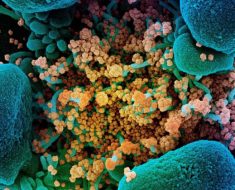A new paper explored the presence of weight bias – “holding negative beliefs, attitudes, judgements and assumptions about people living with overweight or obesity” – in Australian healthcare students.

Introduction
Weight bias may be explicit or implicit. These terms refer to overt and covert bias towards those considered fat. This may lead to derogatory talk from family, intimate partners, colleagues, or online contacts.
People who are overweight or obese may sometimes ask healthcare practitioners to help them lose weight or treat them for other conditions. This is made difficult in the presence of weight bias, as their healthcare providers may contribute to or worsen the issues already being faced by such patients.
Physicians and others offering healthcare to society must be open and impartial in their services. However, many hidden prejudices ingrained by cultures or personal experiences may disrupt this ideal attitude.
For instance, earlier research showed that healthcare professionals often advised on weight loss without being asked when faced with overweight or obese patients; changed some treatments; cut short medical visits; had poor eye contact and negative expressions; and did not carry out some examinations. The result of weight bias among healthcare professionals is weight stigma felt by heavy patients.
This could lead to failure to take up appointments, not taking preventive care, shifting from one doctor to another, and thus experiencing interruptions in care. This is of great concern. Firstly, this is so because today’s healthcare students are the professionals of tomorrow. Also, when negative attitudes towards people who are overweight or obese are felt to be normal, such patients are likely to be treated without respect and their needs ignored.
The current paper, published in eClinicalMedicine, explores the possible weight bias carried by healthcare students with the potential risk factors.
The study was cross-sectional, involving 900 healthcare students at 39 Australian universities. Their weight bias was assessed by tools such as Beliefs About Obese Persons (BAOP), Antifat Attitudes Questionnaire (AFA)—Dislike, AFA Willpower, Empathy for Obese Patients, and Implicit Association Test.
What did the study show?
The findings found that both explicit and implicit weight bias was reported by students across a variety of disciplines, with minimal differences between the courses. Men had higher levels of bias, on all the above tools.
The students tended to believe that obesity was under the individual’s control and attributed it to a lack of willpower. They also tended to dislike obese or overweight people. People at or above a healthy weight feared fat more than those underweight, as did women compared to men.
The fear of growing fat was also greater among those who interacted daily or several times a week with those who were above normal weight compared to those who did so once a month.
There was also an attitude of empathy towards those living with obesity or overweight. Still, those more empathetic towards those with weight issues had lower levels of explicit bias.
When these students were exposed to their role models enacting weight stigma on a regular basis (e.g., daily) vs. sporadically (a few times a month or year), they were less likely to attribute obesity to a failure of willpower. Those who had not spent much time with overweight or obese people (that is, students who interacted with such people once a month or even a few times a month vs. daily) before the study began tended to dislike these conditions more intensely.
What are the implications?
The results of this study show that Australian healthcare students show both implicit and explicit weight bias. The presence of bias depended both on the sex of the students and on previous experiences with weight bias or overweight people. Students with lower weight are more likely to harbor weight bias.
Earlier studies have shown that healthcare students have higher levels of weight bias, assuming low adherence to treatment, low strength of will, and feelings of frustration when dealing with heavier people.
The experience of weight stigma may be conducive to the exacerbation of existing or the development of new health concerns, contributing to an inverse outcome of the aim of health care. Therefore, a greater understanding of weight bias among health care students is imperative.”
The presence of this weight bias remains to be verified in future studies by exploring actual interactions with people who are obese or overweight. Moreover, new methods should be developed to reduce the strength of such bias. Rather than victimizing or shaming those with excess weight, healthcare students should be trained to respond to such patients with impartiality and respect.
- Jayawickrama, R. et al. (2023) "Explicit and implicit weight bias among health care students: a cross-sectional study of 39 Australian universities", eClinicalMedicine, p. 101894. doi: 10.1016/j.eclinm.2023.101894. https://www.thelancet.com/journals/eclinm/article/PIIS2589-5370(23)00071-8/fulltext
Posted in: Medical Science News | Medical Research News | Miscellaneous News | Healthcare News
Tags: Doctor, Eye, Health Care, Healthcare, Obesity, Research, students, Weight Loss

Written by
Dr. Liji Thomas
Dr. Liji Thomas is an OB-GYN, who graduated from the Government Medical College, University of Calicut, Kerala, in 2001. Liji practiced as a full-time consultant in obstetrics/gynecology in a private hospital for a few years following her graduation. She has counseled hundreds of patients facing issues from pregnancy-related problems and infertility, and has been in charge of over 2,000 deliveries, striving always to achieve a normal delivery rather than operative.
Source: Read Full Article





